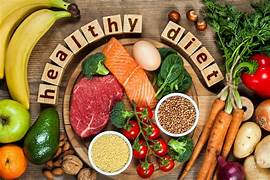“Achieving Weight Loss Without Resorting to Fad Diets”


f you’ve ever embraced a trendy diet, you’re not alone. However, sustaining these restrictive diets over the long term is often challenging. Moreover, the weight lost through such approaches tends to return once you revert to your regular eating habits.
The most effective strategy for weight management isn’t a diet per se but rather adopting a lifestyle that includes enjoyable foods, regular exercise, and healthy habits. Here are some practical tips:
24 Tips for Weight Loss Without Dieting
1. Embrace Variety:
Provide your body with the necessary nutrients by maintaining a balanced diet of proteins, carbohydrates, fats, and other essential elements.
2. Portion Control:
Beware of growing portion sizes. Opt for smaller plates, pack snacks in smaller bags, and share or save restaurant meals.
3. Serving Size Guidelines:
Understand healthy serving sizes, like a fist-sized cup of fruit or a palm-sized portion of meat.
Simple Strategies to Follow:
4. Diverse Diet:
Include lean proteins, whole grains, fruits, vegetables, and healthy fats in your diet.
5. Avoid Bad Fats:
Minimize saturated and trans fats from animal sources and processed foods.
6. Fruits and Vegetables:
Aim for 2-3 cups of vegetables and 1.5-2 servings of fruits daily, based on your age, sex, and activity level.
7. Regular Exercise:
Strive for at least 150 minutes of exercise per week, broken into manageable sessions.
8. Kitchen Cleanup:
Remove high-calorie, sugary, and fatty foods from your home, replacing them with healthier options.
9. Frequent Small Meals:
Opt for 5-6 mini-meals spaced every 3-4 hours to stay satisfied and avoid overeating.
10. Choose Healthy Snacks:
Snack on berries and other low-calorie, high-fiber options to curb hunger.
11. Avoid Empty Calories:
Steer clear of sugary sodas, fruit drinks, and foods with refined sugars.
Additional Advice:
12. Consult Professionals:
For personalized advice, consult with healthcare providers or registered dietitians.
13. Determine Ideal Weight:
Discuss your “ideal” weight and calorie requirements with your doctor.
14. Seek Support:
Involve friends, family, or coworkers in your journey for added motivation and support.
Remember, sustainable weight management is about making lasting lifestyle changes rather than relying on temporary and restrictive diets.



